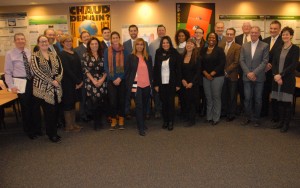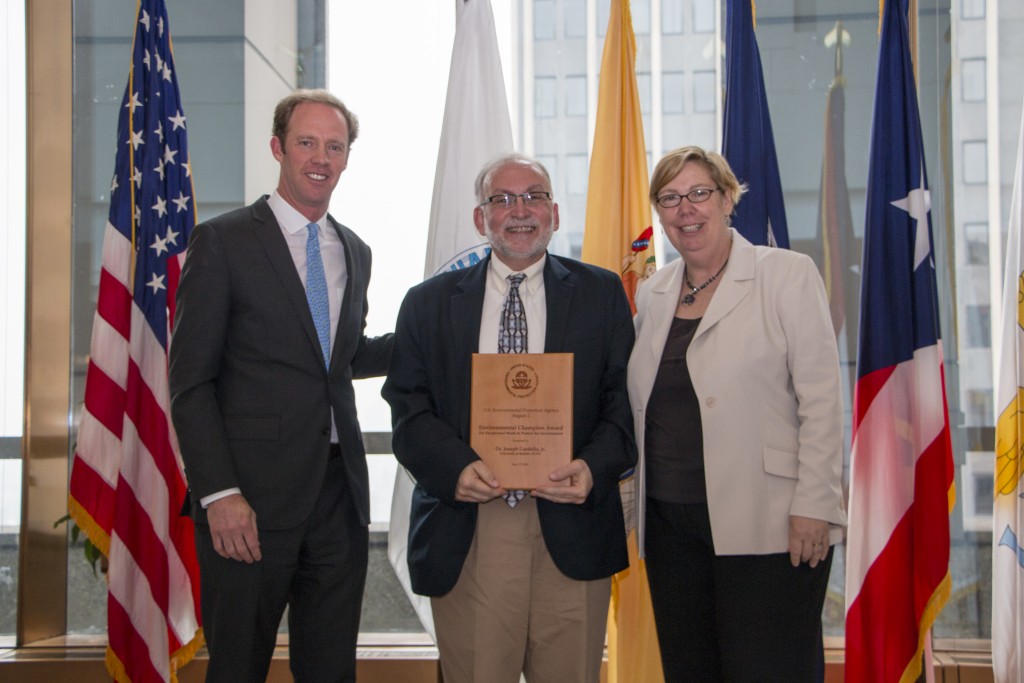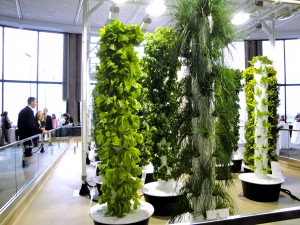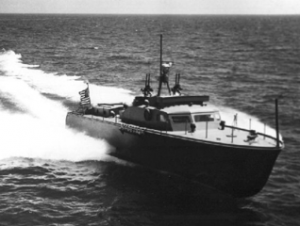Recognizing Our Sustainable Materials Management Award Winners
By Rachel Chaput
EPA’s Sustainable Materials Management (SMM) Program represents a systemic approach to using and reusing materials more productively over their entire life cycles. It represents a change in how our society thinks about the use of natural resources and environmental protection. By looking at a product’s entire lifecycle, we can find new opportunities to reduce environmental impacts, conserve resources and reduce costs.
Each year, EPA issues SMM awards at the national and regional levels, to recognize our best performers within the program. On January 11, an awards ceremony was held at our Region 2 office in New York City, to distribute the awards. Links to the award announcements can be found below. Region 2 would like to announce our regional award and certificate winners for three SMM challenges, and thank them for their great efforts and contributions toward improving our environment and our lives.
The Food Recovery Challenge (FRC) Partners pledge to improve their sustainable food management practices and report their results. FRC Endorsers educate others about the value of the FRC program. Organizations are encouraged to follow the Food Recovery Hierarchy to prioritize their actions to prevent and divert wasted food. In 2015, Region 2 FRC partners diverted 30,077 tons of food from the landfill through their collective activities.
The EPA WasteWise program encourages organizations to achieve sustainability in their practices and to reduce select industrial wastes. Participants demonstrate how they reduce waste, practice environmental stewardship and incorporate sustainable materials management into their waste-handling processes. Region 2 WasteWise partners diverted 925,352 tons of municipal solid waste from landfills during 2015.
The Federal Green Challenge (FGC) challenges EPA and other federal agencies throughout the country to lead by example in reducing the federal government’s environmental impact. In 2015, Region 2 FGC partners diverted 7,678 tons of municipal solid waste from the landfill, and saved 59,536,360 gallons of potable water and 18,371,639 kWh of energy through their conservation activities.
Click here for a list of the SMM partners in Region 2 who are receiving regional awards and certificates of recognition: https://www.epa.gov/sustainable-management-food/food-recovery-challenge-results-and-award-winners#2016Regional
For information on WasteWise and Award winners, visit: https://www.epa.gov/smm/wastewise#awards
Click here for Green Challenge Award winners:
https://www.epa.gov/fgc/2016-federal-green-challenge-awards.
About the Author: Rachel Chaput has worked with the Region 2 office of the US Environmental Protection Agency for 24 years. Before working in Sustainable Materials Management, she worked in Indoor Air programs and managed the Asthma grants program for ten years.

















